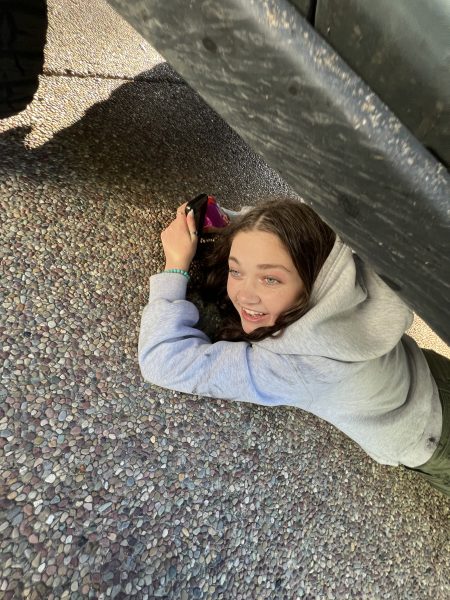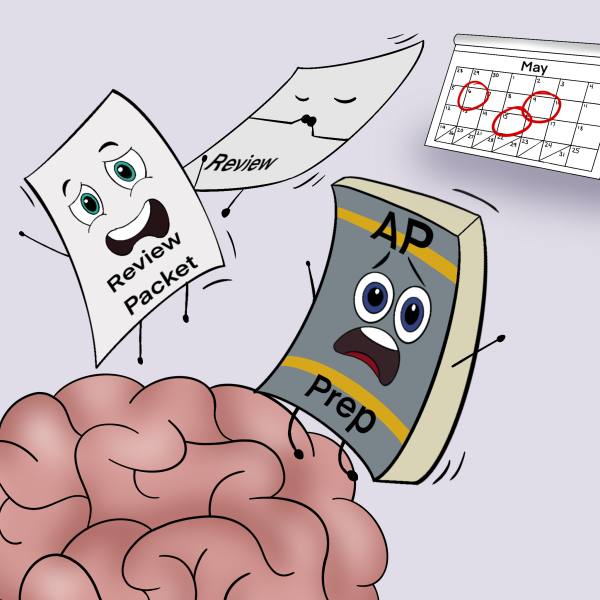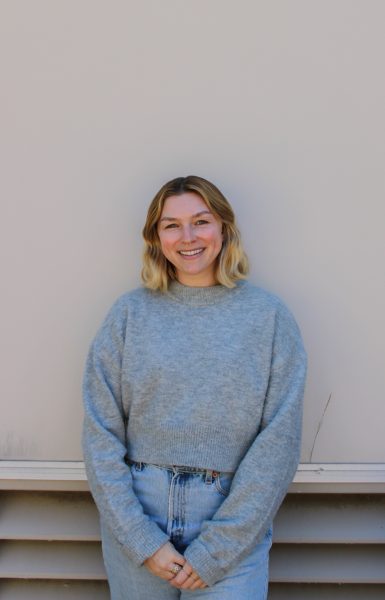APAH Class Highlight: Adventures in SF
The Advanced Placement (AP) Art History class went on an exciting and educational field trip to San Francisco on February 8th. Field trip chaperons included teacher Molly Kerr, World History teacher Allie Tarantino, and substitute teacher Anthony West. Around 65 students chose to attend, with “students from last year [being] invited to come if they wanted,” Tarantino said.
Fundraisers for this weren’t necessary in the planning process because “luckily, we have enough students and families that can donate so we can pay for the buses…and the museums and Japanese Tea Gardens were free,” said Kerr.
Previous field trips included traveling to the Asian Art Museum in San Francisco “which corresponded to when we were studying Asian art…we also explored Japantown which is a cultural experience as well as a nice place to have lunch,” said Kerr.
This year’s destinations were the Japanese Tea Gardens and the De Young Museum. Students had a full day to enjoy the charms of the city.
In summary of the morning, the group went to the Japanese Tea Gardens and then walked around the area. “The students had a paper that they carried with them throughout the museum and had a sketch of different art pieces and structures that they’re learning about,” Tarantino shared. Afterwards, they walked over to the De Young Museum.
Overall she enjoyed the De Young museum’s “outdoor area that’s almost like a bar setup that overlooks the garden and it’s really big.” She said the Japanese Tea Gardens were spectacular because “it was so pretty and serene and it was such a gorgeous day.”
The educational value of this excursion was “making the connection between what we had studied in Asian art in the fall, particularly looking at Buddhism and Shintoism and how that manifested itself…you can see evidence of that [at the Japanese Tea Gardens],” Kerr said.
During the year, the three AP Art History classes focused on many different cultures and art forms. “The former unit [they were] looking at was African and Oceanic art.” For this particular trip Kerr wanted the students to visit the African oceanics, so “[they] went to the African Art Section, and the Oceania section
because there were a lot of artworks…similar to what they had studied.”
Kerr felt excited about being able to continue the tradition of this trip. She said, “It was nice to see [the students] making connections between the museum exhibits and their studies.”
The academic elements of the trip intrigued many students. They also enjoyed the more relaxing activities such as sitting on the outdoor patios. Sophomore Refi Briskman’s expectations were far exceeded because “it was a beautiful day and [they] were in such a pretty area,” she said. “Seeing everything we learned about in the museum was [great]…and the food [we got at the Japanese Tea Gardens] was really good,” Briskman added.
The De Young Museum featured art from “local areas during the 1850s” which Briskman found “really cool and interesting.” It made students feel more closely connected to these older pieces since they related to their own lives in the Bay Area. Being able to learn in a “fun and interactive setting,” was appreciated by many students according sophomore Charlotte Goodman.
Goodman said she was “really excited about the trip and seeing a lot of work and pieces [they] had studied [in class] up close.”
The AP Art History outings are greatly valued by students and teachers especially “because during COVID [there] weren’t any field trips” Kerr shared. She is “hoping [to] coordinate one more field trip, likely to be the Moscone Museum in San Francisco.”
While field trips after graduating elementary school become much more scarce, it doesn’t mean their value diminishes. Many view it as a great experience to seize when the opportunity arises. Being able to make knowledge applicable and see how it connects to local areas is important for students. These trips give greater depth to teacher lectures and google slides; it transforms learned information into a true 3-D form, helping students absorb its full impact.
Your donation will support the student journalists of Campolindo High School's The Claw. Your contribution will allow us to produce more issues and cover our annual website hosting costs.




